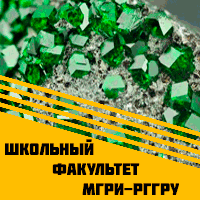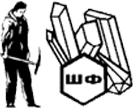Добрый день, Коллеги. Важное сообщение, просьба принять участие. Музей Ферсмана ищет помощь для реставрационных работ в помещении. Подробности по ссылке
Mineral industry of the state of New York 2007–2010 / Горнодобывающая промышленность штата Нью-Йорк в 2007-2010 годах
Since the arrival of European colonists in New York, the extraction of mineral wealth has been an important societal goal. Mining, then and now, provides the raw materials for consumer goods. Iron was used for cooking utensils and stoves, among other things. It was the basis for many construction projects. The availability of “hydraulic” cement was as important in the success of the Erie Canal as it is to the maintenance of the New York State Thruway. Mines provided materials to improve the standard of living of the populace. Late nineteenth century clay mines in the Hudson River Valley provided clay to make literally billions of bricks used to replace the highly flammable wooden building materials of New York City. The State of New York has, since the 1980s, ranked about fifteenth in the nation in terms of mineral value extracted annually. The Mineral Information Institute reports that each person in New York consumes, on average, 9,871 pounds of stone, 7,811 pounds of sand and gravel, and 714 pounds of cement every year (Mineral Information Institute 2009). Mining in New York began as soon as people entered the region after the retreat of the last glacial period. Native Americans extracted chert for projectile points; clay for pottery; and red, yellow, and black iron and manganese minerals for pigments. Various types of stone were used by these early peoples for jewelry, dec oration, and tool making. The modern history of mining in New York began in the southeastern part of the state. As European settlers spread inland, into the Hudson Valley and Adirondacks and westward through the Mohawk Valley to western New York, mining activities accompanied them. Not all portions of the state are equally endowed with mineral wealth. Consequently, many more mines were established in regions such as the Hudson Highlands and Adirondacks than in the Catskills or Southern Tier. Furthermore, since “you can only mine the ore where the ore is,” certain commodi ties were mined only in specific parts of the state. For example, no salt mines ever existed in the Adirondacks and no garnet was ever mined in the Southern Tier.
The Colonial Period As soon as Europeans arrived in New Netherland, they began to search for mineral wealth, particularly pre cious metals. Initially, they traded for metal with the Native Americans and later, as homesteads and com munities were established, the Europeans began to explore on their own. Gold and silver were never found in economic quantities, but other metals were equally or more important for daily life. Iron was first extracted from “bog” deposits. These were small pockets of limonite that were literally deposited in swamps. At the same time, limonite occurred in weathered pockets of rock in the Hudson Highlands and was used for ore. These deposits soon proved to be too small and lean, and further exploration revealed many deposits of mag netite. This mineral became the iron ore of choice. The ore was reduced to metal in local refineries and used for cookware, tools, weapons, and construction materials. The earliest iron mines of this period were located in Columbia and Orange counties. Lead and copper were also metals that the people of the colonial period sought. Galena and chalcopyrite were mined in several counties in the Hudson Valley and in the Mid Hudson region. The lead ore mineral galena also contains traces of silver, and unsuccessful attempts were made to estab lish mines for the latter metal. In addition to metals, stone of several types was quarried for building pur poses. Depending on the local geological resources, marble, limestone, and sandstone were quarried for building stone. Clay deposits, which are common in the Hudson Valley and across the state, were mined for brick and rough pottery. <...>




